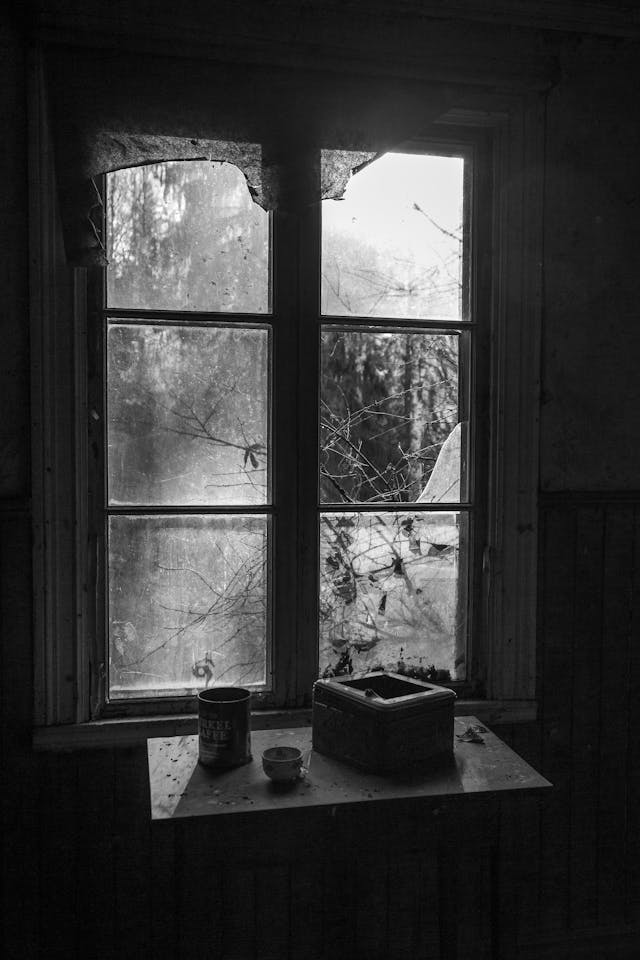Monthly Archives: January 2025
How to Improve Indoor Air Quality for Allergy Relief
 How can you improve air quality for allergy relief? When living in a bustling city like New York, it’s easy to focus on outdoor pollution and forget that indoor air can be just as problematic — especially for those with allergies. In fact, indoor air quality can significantly impact allergy symptoms year-round.
How can you improve air quality for allergy relief? When living in a bustling city like New York, it’s easy to focus on outdoor pollution and forget that indoor air can be just as problematic — especially for those with allergies. In fact, indoor air quality can significantly impact allergy symptoms year-round.
Top allergists stress the importance of maintaining clean, allergen-free indoor environments to reduce allergic reactions and improve overall health. Here’s a complete guide to enhancing your indoor air quality for better allergy relief.
Why Indoor Air Quality Matters for Allergy Sufferers
Indoor air often contains allergens like dust mites, pet dander, mold spores, and volatile organic compounds (VOCs) from cleaning products or building materials. Poor air quality can lead to:
- Increased sneezing, coughing, and congestion
- Worsening of asthma symptoms
- Eye, nose, and throat irritation
- More frequent sinus infections
- Fatigue and poor sleep quality
For allergy sufferers, improving the air inside your home or workplace can dramatically reduce symptoms and improve overall well-being.
Effective Strategies to Improve Indoor Air Quality
Improving your indoor environment doesn’t have to be complicated. A few targeted strategies can make a major difference.
1. Use HEPA Filters
High-Efficiency Particulate Air (HEPA) filters trap tiny airborne particles, including allergens, and are essential for:
- Air purifiers
- Vacuum cleaners
- Heating and cooling systems (HVAC units)
Allergists recommend using HEPA-filtered devices throughout your home, especially in bedrooms and living areas.
2. Keep Humidity Levels in Check
Dust mites and mold thrive in humid environments. Maintain indoor humidity between 30% and 50% by:
- Using a dehumidifier during the warmer months
- Ventilating bathrooms and kitchens to reduce moisture buildup
- Fixing leaks promptly to prevent mold growth
3. Regular Cleaning Routines
Routine cleaning can drastically reduce the number of allergens in your home:
- Vacuum carpets and rugs at least once a week using a HEPA-filter vacuum.
- Wash bedding in hot water weekly to kill dust mites.
- Dust surfaces with a damp cloth to trap allergens instead of scattering them into the air.
4. Minimize Chemical Irritants
Household cleaning products, scented candles, and air fresheners can release VOCs that worsen allergies. To minimize chemical exposure:
- Choose fragrance-free and non-toxic cleaning supplies.
- Ventilate the space well when painting or remodeling.
- Consider using natural alternatives like vinegar and baking soda for cleaning.
5. Control Pet Dander
If you have pets, take extra steps to reduce allergens:
- Keep pets out of bedrooms and off upholstered furniture.
- Bathe and groom pets regularly.
- Use HEPA filters and clean frequently to remove pet hair and dander.
6. Improve Ventilation
 Good ventilation helps remove allergens and bring in fresh air. Tips include:
Good ventilation helps remove allergens and bring in fresh air. Tips include:
- Opening windows when outdoor air quality is good (check local AQI reports).
- Using exhaust fans in bathrooms and kitchens.
- Installing air exchange systems if you live in a tightly sealed building.
Additional Tips for Allergy Relief at Home
- Remove shoes before entering your home to avoid tracking in allergens.
- Replace curtains with washable blinds to minimize dust collection.
- Encourage a no-smoking policy indoors to eliminate tobacco smoke exposure.
With a few lifestyle changes and strategic improvements, you can dramatically enhance your indoor air quality and enjoy noticeable allergy relief.
Improve Indoor Air Quality for Allergy Relief: Contact NYC’s Allergy Specialist for Expert Advice
If you’re struggling with allergy symptoms despite your best efforts at home, professional help can make all the difference. Schedule an appointment with Dr. Boyan Hadjiev at:
Allergy, Asthma and Sinusitis P.C.
Boyan Hadjiev, MD
30 East 40th Street
Suite 1200
New York, NY 10016
212-319-5282
Take the first step toward a healthier, allergy-free environment with the support of NYC’s top allergy expert. Breathe easier — starting today!
Pediatric Allergy and Asthma: What Parents Need to Know
 Understanding pediatric allergy and asthma management is essential for helping your child thrive, and early intervention can make a world of difference. Raising a child with allergies or asthma can be overwhelming, especially in a busy city like New York. From seasonal pollen to indoor allergens and air pollution, the environment presents constant challenges.
Understanding pediatric allergy and asthma management is essential for helping your child thrive, and early intervention can make a world of difference. Raising a child with allergies or asthma can be overwhelming, especially in a busy city like New York. From seasonal pollen to indoor allergens and air pollution, the environment presents constant challenges.
Common Pediatric Allergies and Asthma Triggers
Children can be sensitive to a variety of allergens and environmental factors. Some of the most common triggers include:
- Environmental Allergens: Pollen, mold, pet dander, and dust mites are major contributors to allergic reactions.
- Food Allergies: Peanuts, tree nuts, milk, eggs, soy, wheat, fish, and shellfish are among the most common food allergens.
- Air Pollution: Exposure to traffic emissions and industrial pollutants can worsen asthma symptoms.
- Weather Changes: Cold, dry air in the winter and humid conditions in the summer can trigger asthma flare-ups.
- Viral Infections: Common colds can easily escalate into asthma attacks in sensitive children.
Recognizing Symptoms Early
Early recognition of allergy and asthma symptoms is key to managing them effectively. Watch for signs such as:
- Persistent coughing, especially at night
- Wheezing or shortness of breath during play or physical activity
- Frequent sneezing, nasal congestion, or runny nose
- Itchy, watery eyes
- Complaints of chest tightness or feeling tired more easily than peers
If you notice these symptoms, it’s important to seek evaluation and treatment promptly.
Diagnosis and Testing for Pediatric Patients
Proper diagnosis involves a combination of medical history, physical examination, and specialized tests. Allergy testing can identify specific environmental or food allergens triggering your child’s symptoms, while pulmonary function tests may assess asthma severity.
Accurate testing ensures a treatment plan that is customized to your child’s individual needs — reducing guesswork and offering real solutions.
Effective Treatment Options
A comprehensive treatment plan can help your child live an active, healthy life with minimal symptoms. Options include:
- Allergy Medications: Antihistamines, nasal sprays, and eye drops can control allergy symptoms.
- Asthma Inhalers: Quick-relief inhalers and long-term controller inhalers help manage breathing issues.
- Immunotherapy (Allergy Shots): Over time, allergy shots can help reduce sensitivity to allergens.
- Emergency Action Plans: An individualized plan for managing severe allergic reactions or asthma attacks can save lives.
Helping Your Child Thrive
In addition to medications, small changes at home can make a big difference in managing pediatric allergy and asthma symptoms:
- Use hypoallergenic bedding and wash linens in hot water weekly.
- Minimize exposure to pets if dander is a known trigger.
- Monitor pollen counts and limit outdoor activities during peak allergy seasons.
- Maintain indoor air quality with HEPA filters and dehumidifiers.
- Educate your child about recognizing symptoms and using inhalers or medications properly.
With the right care, most children with allergies or asthma can fully participate in school, sports, and social activities without limitations.
Contact NYC’s Pediatric Allergy and Asthma Specialist
If your child is struggling with allergies or asthma, expert care can make all the difference. Schedule a consultation with Dr. Boyan Hadjiev at:
Allergy, Asthma and Sinusitis P.C
Boyan Hadjiev, MD
30 East 40th Street
Suite 1200
New York, NY 10016
212-319-5282
Give your child the best chance at a healthier, happier life by working with an experienced NYC allergist who truly understands pediatric care.
Serving all of New York City and the Tri State Area including Zip Codes: Top Allergist NYC Midtown, Chelsea and Clinton: 10001, 10011, 10018, 10019, 10020, 10036 | Gramercy Park and Murray Hill: 10010, 10016, 10017, 10022 | Greenwich Village and Soho: 10012, 10013, 10014 | Lower Manhattan: 10004, 10005, 10006, 10007, 10038, 10280 | Lower East Side: 10002, 10003, 10009 | Upper East Side: 10021, 10028, 10044, 10128 | Upper West Side: 10023, 10024, 10025
